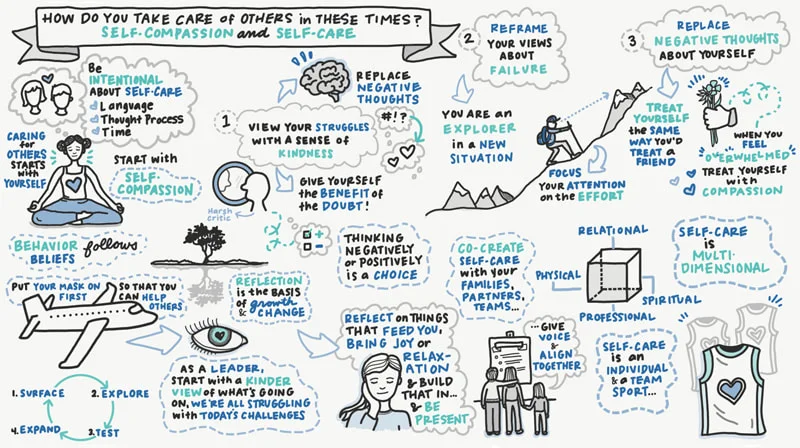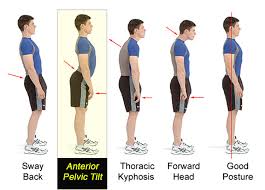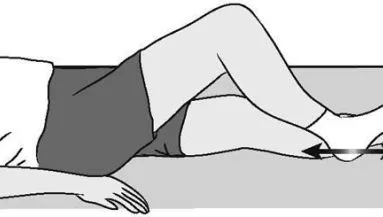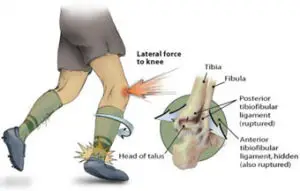Self-Compassion Exercise: How to Be Kinder to Yourself
Introduction
Self-compassion is the practice of treating yourself with kindness and understanding, especially when you are struggling or going through a difficult time. It involves accepting yourself as you are, without judgment, and recognizing that everyone makes mistakes and experiences suffering.
What is self-compassion?
Self-compassion means treating ourselves with the same respect and consideration as one would a loved one. Self-compassion is demonstrated in both thoughts and actions.
Take a bath or participate in meaningful social interactions as examples of how we might take care of ourselves. It entails paying attention to our needs rather than primarily concentrating on what other people or the outside world want us to do.
Giving yourself the same compassion that you would give to others is what is meant by self-compassion. That indicates that practicing self-compassion entails providing peace and caring for oneself.
Compassion for oneself is self-care. List the ways you now take care of yourself.
Treating oneself with the same kindness as you would your own child is one of the first stages in learning self-compassion. Self-care is a set of short and sweet everyday actions that, over time, meet your needs.
Exercises that promote self-compassion can assist you in changing your attitude towards yourself. These should have a number of benefits, including:
- Reduced stress and anxiety
- Increased strength
- Improved mood and self-esteem
- Stronger relationships
- Better physical and mental health
Here is a simple self-compassion exercise that you can try:
Look for a peaceful area where you won’t be distracted.
Select a comfortable sitting or lying position.
Take several long, deep breaths while closing your eyes.
Bring to mind a time when you were feeling difficult emotions, such as sadness, anger, or fear.
Imagine that you are talking to a friend who is going through the same experience. What would you say to them?
Now, say the same things to yourself. Be kind and understanding.
Repeat steps 4-6 for a few minutes.
This practice can also be used when you are feeling judgmental or self-critical. Just one inquiry should be asked of yourself: “What would I say to a friend who was feeling this way?” After the practice…
Here are some more guidelines for developing self-compassion:
- Be mindful of your thoughts and feelings. When you notice yourself being self-critical, take a step back and ask yourself if you would be as critical of a friend.
- Forgive yourself for your mistakes. Everyone makes mistakes. It’s crucial to forgive yourself and memorize your errors.
- Be patient with yourself. Change takes time. Accomplish and give up if you don’t get results.
Self-compassion practice is a skill that takes time and effort to perfect. But with regular practice, you can learn to be more kind and understanding towards yourself, which can lead to a number of benefits for your physical and mental health.
Even if you hold yourself accountable for them, go deep and think about the things you like to do.
The three components of compassion for oneself
identify three key components that can aid in our understanding of the idea.
- Self-Judgment VS. Self-Kindness
Recognize that everyone has weaknesses that failures occasionally occur, and that problems are an unavoidable part of life. - Isolation vs. common humility
Recognize that you are not alone in experiencing sadness and inadequacy; it is a part of the shared human experience. - Awareness VS. over-identification: Utilize mindfulness to develop a realistic perspective of our difficult emotions so that they are neither repressed nor exaggerated.
Self-Compassion Exercises
You Deserve Care

You’re balancing a lot right now, let’s face it. Although it may seem impossible, taking the time to slow down and practice self-care can have an enormous beneficial effect.
The physical component involves having your muscles relax and release body tension.
What kind of care do you provide your body?
What are some physical ways you could let go of tension and stress, or what are some methods that already work?
Try some of these stress-relieving activities.
The mental component: Let your thoughts come and go without trying to control them.
How do you take care of your mental health?
How could you relax the way you regulate your thoughts and stop fighting them to come and go?
Try some of these mental self-care exercises.
Emotional component: Trying to understand your emotions rather than repressing them is the emotional component.
How can you maintain good mental health?? rather than repressing your feelings, learn to understand them.
What else might you do to look after your emotions?
Try these methods for controlling your emotions.
Relational component: Finding a connection with people and avoiding isolation is the relational component.
How does happiness grow in your relationships?
What improvements could you make to the existing connections and relationships?
Try a few of these suggestions.
Increasing Self-Awareness

What is your response to compliments you receive from others or yourself?
Do you accept it smoothly and without difficulty, or do you tens up, fight it, or ignore it?
What is valuing oneself?
The act of recognizing and acknowledging the importance of your positive qualities is known as self-appreciation.
Recognizing our accomplishments and qualities, however, is frequently easier said than done for a variety of reasons.
First off, humans naturally attach greater psychological weight to negative than to positive objects or experiences due to what is known as a negativity bias. As a result, we are:
More inclined to concentrate on our weaknesses and less likely to see ourselves positively and acknowledge and appreciate our good qualities.
Second, a common roadblock to self-appreciation is growing up in a setting where one is discouraged from feeling proud of their accomplishments. In these situations, acknowledging one’s abilities and successes can feel awkward and “wrong,” as it feels out of character.
Develop self-appreciation through exercise.

The exercise:
Step 1: Identify positive qualities
Write three to five positive or impressive qualities about yourself. Allow yourself to be open-minded and honest about the things you truly appreciate about yourself. You can give however little or how much information you want.
Step 2: Say thank you to oneself
Reread your list (Step 1), think about each of these strengths one at a time, and give yourself a mental pat on the back for possessing each one. As you do this, close your eyes and pay attention to any ideas or emotions that arise.
Step 3: Record your feelings and thoughts.
Note any nice or unpleasant thoughts and sensations that surfaced during Step 2.
I believed…I felt…
Step 4: Thank those who provided assistance.
Now, think about who contributed to the development of each favorable quality.
Maybe your family, your parents, your instructors, or even the writers of books that had a beneficial effect on you. Express your thanks and gratitude in writing to each of these important individuals (e.g., “I am grateful to X for helping me develop [insert positive quality]”).
Step 5: Take a seat, enjoy, and think.
Spend a minute in this place feeling grateful for who you are and the people who have influenced you. Then, talk about the following:
- How did it feel to thank yourself for being good to yourself?
- Did you find any of the exercises challenging?
- Which parts of the workout did you find to be the simplest?
- Did adding thankfulness and respect for others make it easier to appreciate oneself?
- What did the activity teach you?
Finding Your Mental Safe Space and Letting Go of Self-Judgment

Let’s step aside from the daily grind. Your emotions count. Your ideas matter and are significant. Let’s transform your mental space into a happy environment.
Self-judgment – what is it?
The act of generating an opinion or drawing a conclusion about oneself based on the information at hand is known as self-judgment. If such thoughts are unfavorable, negative emotions including worry, rage, and despair may manifest.
Exercise: Recognise your self-critical thoughts.
This practice aids in raising your awareness of self-criticism or judgemental thoughts that may surface when faced with challenges, such as making a mistake or acting in an unfavorable manner.
When we become conscious of this pattern of thinking, we can observe how it affects how we feel about ourselves and investigate various strategies for controlling it.
Step 1: Identify negative feelings
Write down every critical thought you had about yourself, either at the end of the day or the following morning.
Step 2: Reframe the situation with impartial thinking
Do your best to reframe each of these thoughts into a neutral form depending on how you are feeling and what you need at the moment (you may use our chart to help you identify these things).
Step 3: Make a self-acceptance statement
Now, think about what you can say to yourself to reinforce your newly reframed, non-judgmental thoughts about yourself. Each time you have a thought that is not judgemental, write down at least one praise of yourself.
Knowledge of the Inner-Commentator

We need self-compassion the most when times are challenging when we fail or make mistakes. For the majority of us, a harsh self-critical voice that mentally gets us up rather than a self-compassionate voice helps us in these situations. In order for self-compassion to develop, we must become conscious of the barriers that stand in the way.
The voice inside our heads that offers judgmental, negative commentary is known as the inner critic. The evaluations might include phrases like “You are useless,” “You can’t do anything right,” “You are not capable,” etc.
Exercise: The exercise aims to make you more conscious of your inner voice of judgment and its effects on your emotions and motivation.
This practice can assist you in realizing that your inner critic’s critical voice is unlikely to serve as a productive springboard for changing something.
Set personal Limits
Consider developing self-compassion by beginning with simple personal boundaries. While having the ability to practice compassion for others is important, there needs to be a balance in how you use your energy; pay attention to how much time you spend taking care of the people in your life against your own needs. After all, when you practice self-compassion and take time for yourself, you’re not only better able to be at your best for yourself, but you’re also better able to be at your best for those around you, which has a positive knock-on effect. Therefore, it’s important to create boundaries when practicing self-compassion to make sure you strike a balance between watching out for and showing compassion to others as well as engaging in acts of self-kindness.
Instructions: What aspects of your life or yourself do you find most fault with?
What does it look like when you are critical of yourself? Do you disrespect people? Do you make an effort to recognize your limitations?
How does it feel to be important of oneself?
How do you talk to yourself when you’re being important of yourself? Could you provide a few examples?
Consider how you would sound if someone else were to speak to you in the same manner that you do when you are being important of yourself. What would you do? Would you consent to this?
Why do you let your inner critic treat you this way if you wouldn’t allow it?
Do you feel inspired to work towards improving yourself as a result of the criticism, or do you feel discouraged?
When you find something about yourself that you think is a weakness, when you fail or make a mistake, what would a wonderful friend who loves you unconditionally say to you?
Is it possible to switch out the inner critic for a voice that sounds like your friend’s voice (see the preceding query)? How could you respond?
Find out more about controlling your inner critic.
Extra ways to overcome regret and shame (your inner attacker).
Protecting and providing for yourself in times of need: You’re Worth Protecting
The nurturing, comfort, and calming side of self-compassion can be compared to the protective, supportive, and motivating side.
Consider a person who feels burned out at work as an example. After a long day, this person would look for comfort by running a hot bath and turning on relaxing tunes.
As an alternative or in addition, this person could take action by approaching the workplace about reducing his or her existing workload.
We are going to focus on each of these components of self-compassion in this practice.
Step 1: Pick a challenging situation in your life. Think of a circumstance that you are now struggling with. For instance, you can be stressed out at work or you could have fallen into a fight with a relative. Write about this circumstance in your journal.
Step 2: Create at least one internal self-compassion action related to your current challenging situation (described in Step 1):
What can you do to take care of your emotional needs, comfortingly?
Try some of these soothing suggestions.
What one action can you take to make yourself feel physically more at ease and calm?
Find suggestions for self-soothing here.
step 3: Determine at least one external self-compassion action that you can take in relation to your current challenging situation (as identified in Step 1):
What can you do to stop the suffering you are experiencing from others or the harm you are putting yourself through?
Know more About establishing healthy boundaries with others and effective communication techniques for inspiration.
What can you do, in one simple act, to give yourself what you need?
About identifying your needs, read more.
How can you motivate yourself without using criticism but with kindness, support, and understanding?
Try these tips for developing positive affirmations.
Would you behave this way to a friend?
You have a deep love for your buddies. What makes you become so hard on yourself? Maybe you should start a new conversation if you don’t talk to a buddy like this.
Simply put, self-compassion is compassion for oneself.
Being compassionate to ourselves instead of being judgmental of ourselves while we are suffering is a key component of self-compassion. In this way, we have a kind and supportive internal conversation and may honestly and fearlessly resolve our shortcomings and problems.
Unfortunately, when we are going through a challenging period, most of us prefer to use harsh, judgmental language, such as “Wow, that was dumb,” or “I’m a failure.”
Think about whether you would say such things to a close friend or even a complete stranger.
According to research, most people are more welcoming to others than to themselves. This holds true even for situations or occurrences that are out of our control, like getting into a car accident.
Supportive Touch

Giving yourself a supporting touch when you’re feeling down is a simple method to take care of and comfort yourself. The parasympathetic nervous system and the care system are activated by touch to promote relaxation and a sense of security. Your body may not be aware of how weird or unpleasant it feels at first. Just like a baby reacts to being held in its mother’s arms, it simply responds to the physical gesture of love and care. Our skin is a very delicate organ. Physical touch, according to research, lowers cardiovascular stress, calms stressful emotions, and releases the neurotransmitter oxytocin. Why not try it for yourself then? Consider placing your hand on your body multiple times each day for at least a week when going through trying situations.
Hand-on-Heart
Take 2-3 long, relaxing breaths whenever you feel yourself becoming stressed.
Feel the warmth and light pressure of your palm as you place it gently over your heart. If you like, put both hands on your chest and compare the feel of one and two.
Feel your hand’s pressure on your chest. You could create a few tiny circles with your hand on your chest if you like.
As you breathe in and out, notice how naturally your chest rises and falls.
Spend as much time as you like considering the emotion.
Placing a hand over the heart causes some individuals discomfort. Feel free to experiment with the parts of your body where a soft touch is genuinely relaxing. Other alternatives include:
your cheek with one hand
Placing your hands over your face
aggressively massaging your arms
placing your arms in a cross and delivering a light squeeze
gently massaging your chest, or moving in circles
A hand on your stomach
Place one hand over your tummy and the other over your heart.
putting one hand in your lap and the other in a cup
Hopefully, you’ll begin to form the practice of physically consoling yourself when necessary, making the most of this really easy and basic technique to treat yourself well.
Break for self-compassion

Take into consideration a challenging or stressful scenario in your life. See if you can genuinely sense the stress and emotional distress in your body by recalling the circumstance.
Say to yourself right now:
- This is a painful moment.
Mindfulness is that. Other choices include of:
It stings.
Ouch.
This is fear.
- Being alive means experiencing pain.
That is only being human. Other choices include of:
This is how other people feel.
It’s not just me.
In life, we all experience difficulties.
Put your hands over your heart now and notice how warm they feel and how softly they touch your chest. Or adopt the calming movement that you’ve come to feel is best for you.
Say to yourself:
- Please let me be compassionate to myself.
What is it that I need to hear to be kind to myself right now?” can also be used. Is there a saying that resonates with you in your own circumstance, such as:
May I have the kindness I need to show myself?
May I grow to love and accept myself for who I am.
May I have strength.
Please be patient.
The three characteristics of self-compassion can be called at any time of day or night using this exercise, which will aid in helping you remember to do so.
How Would You Treat a Friend? is an exercise.

Instructions: Follow these four steps to develop your self-compassion.
Step 1
Think back to when a close friend went through a difficult time or felt self-conscious. Note the tone of voice you would use and what you would do and say to your friend in writing.
Friend’s situation
My reaction
Step 2: Consider a time when you were having trouble. Maybe anything in your life right now makes you feel horrible. Note the tone in which you speak to yourself as you write down what you would say and do.
My situation
My reaction
Step 3
If you were responding to yourself, would you react differently than you would to a friend? If so, consider why this would be the case and list the reasons why you might treat yourself and others differently:
Step 4: Now, jot down how you believe things could alter if you treated yourself the same way you would treat a good friend who is going through a difficult time.
Now, note down how you believe things would change if you treated yourself the same way you would treat a good friend who is going through a difficult time.
Treat yourself like a good friend when things in your life don’t go as you had hoped, and watch what occurs.
Being kind to oneself will become more automatic and habitual the more you do it.
Identifying personal rules in “Goodbye Expectations”
Rules are “shoulds” that significantly affect our feelings and behavior. Expectations include guidelines such as, “I should work hard,” “I should be kind to other people,” “I should always be on time,” “I must not show that I am afraid,” etc.
Although ignoring these conventions may result in unpleasant feelings like stress and humiliation, they can also aid in decision-making and serve as a behavioral guide. It’s crucial to learn how to apply your rules flexibly so that they don’t control your life in ways that don’t always benefit you.
Instructions: The objective of this exercise is to make personal rules more flexible, not to destroy them.
Step 1: Recognizing the laws
Try to take down as many personal rules as you can this week. Identify any thoughts that begin with “I should,” “I should not,” “It would be better if,” etc.
Be aware that some questions can also be used to highlight a personal rule. “Why am I not more spontaneous?” arrives to me. could draw attention to the requirement that I be spontaneous.”
Second step: analyzing rules
Now examine all the regulations you have noted down. Answer the following inquiries about each rule:
How strictly do you adhere to the 1–10 rule?
How significant do you think this regulation is?
How much does this law improve your quality of life?
How much freedom do you have to follow your dreams under this rule?
Step 3: Violating the law
Now take another look at your list of rules. Which of these regulations is now affecting your health the most negatively?
What negative effects do these rules have on your well-being? How do they interfere with your goals?
One of the most effective ways to lessen the consequences of regulations is to challenge them by breaking them or by not always adhering to them. What can you do to go against, challenge, or lessen the impact of these rules?
Step 4: Assessment
After contesting a regulation, assess this procedure.
What happened when you disobeyed or contested the rule(s)?
What occurred, or what feelings and/or ideas did you have as a result?
How did you handle these outcomes, ideas, and emotions?
How strictly (0–10) will you follow the rule(s) moving forward?
What did this exercise teach you?
Change your shoulds by using these tools.
Identifying cognitive errors
Identifying basic values
Concentrating on Our Behavior Rather Than Self-Evaluation
We all make errors and occasionally act in ways that we are ashamed of. People may assess their errors or unfortunate deeds in different ways, though. Others may view such behaviors as unavoidable occurrences that are simply a part of being human, yet some may consider such behaviors as evidence of being a “flawed” or “unworthy” human being.
You will investigate these two methods of assessing errors or unfortunate activities in the following task.
Step 1: Recognize past mistakes
Make a list of the five to ten things from your history that you regret or wish you had done differently. You might have made a mistake, spoken rudely to someone, gotten too furious at a driver, forgotten a close friend’s birthday, or treated someone unfairly.
Step 2: Assess who you are as a person.
Evaluate your personal qualities for engaging in each of the behaviors you listed in step 1 and for making the error.
What traits of your personality might have caused the error?
This overall assessment of oneself should be entered in the second column.
Step 3: Assess your actions
Consider your actions in light of the error now. What activities or qualities might have caused the error? (i.e., a lack of time, multiple demands on your time, tension, overpower).
How did you find the exercise?
Do your feelings toward yourself change when you compare your responses from the second to the third step? How, if so?
Which of the responses (second or third step) is more inspiring to you to get better the next time?
Will you aim to assess your mistakes or unfavorable actions going forward? Will you examine yourself or your behavior? Why?
By completing this exercise, you should be able to recognize how important it is to concentrate on your conduct as opposed to attaching yourself to your “mistakes.”
We’ve all heard the saying, “We’re our own worst critic,” and it’s generally accurate. It’s common for most of us to have negative thoughts.
Not having negative thoughts is the issue; the issue is when we begin to believe them.
Delete those unfavorable ideas from your mind! Here’s how to unstick them:
1) “I’m thinking about __”
Your thoughts do not make you. Distancing oneself from your thoughts is important. We frequently find ourselves making up the same self-deprecating tales, such as our “incompetent story” or “failure story.” It helps us to regain our composure and separate ourselves from our negative ideas when we recognize that they are simply that—thoughts.
2) Exercise your mind
The difficulty of stopping negative thinking once it has started is one of its primary limitations. Therefore, you need to teach your brain to think differently when you start to have negative thoughts.
Going on a make-believe shopping trip is one of the finest methods to achieve this. This is a wonderful one to think about since the majority of us routinely go to the store for food. If you can’t relate to this, try thinking about shopping for clothes or office supplies. When imagining the goods on the shelves and their arrangement, be as particular as you can. If it’s more convenient for you, you can also begin by reading the titles of the books in your library.
For approximately a minute, try this. Every time you feel a wave of negative ideas coming your way, do it. Yes, each and every time! You may guide your thoughts in a different, more beneficial path if you train your brain to think in these ways.
The most harmful way to learn from mistakes is to dwell on them since doing so prevents us from moving on and really making better decisions in future situations. Yes, our errors can make us feel bad, but there is no way to go back in time and change the past. Life is an adventure. Everyone wants to be their best selves. Negative thoughts will lose their grasp on us and their ability to hold us back when we are kind to ourselves (and others!).
3) Step outside of your comfort zone.
Realists are frequently referred to by pessimists and those who think negatively. But this is actually simply a ruse to hide failure anxiety. You cannot claim failure if you don’t even try because you believe you won’t succeed at something. You also cannot claim to have given it your utmost effort. Stuck in this mental comfort zone, it appears more critical to be “right” by correctly predicting the worst than it is to take a chance on anything and succeed or be “wrong.”
To put it another way, your negative ideas are producing a self-fulfilling prophecy. Even if you think you might fail, go out there and try things. Although it can be a little frightening, you at least gave it a shot. which is preferable than making no effort at all.
4) Quit making generalizations.
No, you “never do anything right.” You did get out of bed today, after all. You most likely did put your shoes on correctly. You buckled your seatbelt securely. By saying “thank you” to the person who took your coffee order and by holding the door open for someone whose hands were full, you demonstrated good manners and citizenship. But none of those actions give you the impression that you are a superhuman, do they? So why should making a few mistakes at once make you feel like a loser?
For When Life Feels Too Much…Increasing Thoughts and Actions of Self-Compassion
Am I having good, considerate thoughts?
Am I being set off?
Can I accept my current state of mind if I’m experiencing a negative emotion?
When focusing on self-compassion, these three questions should be taken into account.
We tend to be lot harder on ourselves than on our friends, families, colleagues, etc. In truth, we are capable of being our own support system and guidance. We may be as kind, polite, and considerate to ourselves as we are to others with time, effort, and practice. The best place to begin is by consistently practicing self-compassion.
Instructions: Make every effort to become conscious of your self-critical thoughts as possible
Try to write down the self-critical thinking using the table on the next page whenever you become aware of it. As an alternative, you may jot down the concept on a different piece of paper or with your phone.
Next, consider what thoughts would be more reflective of self-compassion. What would a reliable buddy who genuinely cares about you say to you? Also, note down these ideas.
Finally, consider what actions would be more compassionate. What steps can you take to resolve the problem that the self-critical thoughts are reflecting? Make sure the actions are motivated by self-care and compassion rather than by self-disapproval or judgment.
Examples of how to change judgmental thoughts into compassionate ones include:
- Self-criticism: I am overweight.
- I’ve been having a difficult time recently, and it’s good to feel this way.
- Compassionate behavior is making an effort to keep to a workout routine.
- I look terrible in images, I tell myself.
- Kind Thought: My goal is to be content.
- Find a friend who shares your objectives so that you can work toward them together.
- I should be ashamed of myself, I tell myself.
- Compassionate Thought: I believe that eating helps to reduce stress.
- That’s OK, but perhaps I can come up with a better plan of action.
- Nobody would ever love me because of the way I look, I tell myself.
- Compassionate Thought: I deserve love because I am attractive in my own skin.
- Compassionate Action: Get a personal trainer from your neighborhood gym.
Making a compassionate self-image
This exercise is meant to help you picture and comprehend what compassion might feel or look like. You might discover that they have the capacity to behave in a sympathetic manner. Or even start to comprehend how acting compassionately might benefit those around you and promote your own personal development.
Think of the most important characteristics of a compassionate person.
Here are some important characteristics:
- genuine maturity and knowledge.
- Strength.
- Honesty and kindness.
- a dislike of making judgments.
- Responsibility.
- a drive for improvement.
Imagine how you would act if you have the following characteristics. Imagine yourself becoming more mature and wise. Sit quietly and focus on your breathing. Once sufficiently at ease or composed, visualize yourself as a person of the highest compassion. Imagine yourself in all of your behaviors, attitudes, and actions.
Try focusing on a few particular characteristics of compassion to direct your imagination:
You are composed and sage.
You’re sympathetic.
Even in the face of adversity, you have the capacity to endure and thrive.
You have a good disposition.
You like helping people and wish to end suffering.
Use your posture and facial expression to express an understanding attitude:
Be mindful of your body.
Feel your body growing and expanding.
Consider how rewarding it is to be kind.
Here is a manual for growing inner compassion.
Practice to develop self-compassion:
The Loving-Kindness Meditation

10-Minute Loving Kindness Meditation
It only takes ten minutes to complete one of the simplest self-compassion exercises. You can follow along to a ten-minute loving kindness meditation using the meditation app The Mind. You will be guided through the meditation’s steps for expressing compassion to difficult people, a loved one, a stranger, and yourself. It may sound challenging to practice this meditation for the first time. If you’re not used to it, it may be challenging to be compassionate toward yourself. You will be guided through the experience to reduce some of the anxiety, so don’t worry. You’ll discover that doing a loving-kindness meditation on a daily basis will help you to become more forgiving of both yourself and others who have wronged you.
Through this self-compassion exercise, you’ll increase your empathy, which will help you understand yourself and others better.
This meditation is a quick and effective technique to develop self-compassion. It entails speaking to yourself and other people with loving and compassionate words.
Search quiet location where you won’t be distracted.
Close your eyes and take a seat in a comfortable spot.
Breathe deeply a few times to calm your body down.
Think of a person you really care about and love. This might be a close friend, a member of the family, a pet, or even a spiritual leader.
Say these words aloud to yourself: “May you be happy.”I hope you’re well.
I hope you’re safe.
I hope your life is easy.
For a few minutes, keep saying these things until you begin to feel affection and compassion for this person.
Then, think of yourself.
Say this aloud to yourself in a quiet voice: “May I be happy.”
I hope to be well.
I hope I’m safe.
May I live comfortably?
For a few minutes, keep saying these words aloud until you start to feel warm and compassionate toward yourself.
Finally, visualize all living things.
Say this aloud to yourself in silence: “May all beings be happy.”
May health be with you all.
Be safe, all living things.
May all living things be at ease.
Repeat those prayers again for a few minutes, or until you begin to experience warmth and compassion for all living things.
Open your eyes when you’re prepared to start your day.
Although you can practice this meditation for however long you desire, even a few minutes a day might be helpful.
Create a letter of self-compassion.
Writing letters of compassion to yourself can help us feel happier and less depressed, according to research. In order to be kind to oneself, try writing to yourself as if you were a child or someone who needed kindness. Here is a self-compassion practice to aid in the development of this talent.
Practice Gratitude

One of the best self-compassion exercises to maintain good mental health is practicing being thankful. Keep a thankfulness record and include a few things you’re thankful for every day. This will encourage you to begin each day by reflecting on your life’s abundance. Often, when we view our lives through an understanding of what we don’t have, we never truly feel joy. Instead of what is right, we concentrate on what is wrong. Being thankful for what you already have will make happiness come to you naturally. Even the wealthiest and most successful individuals can discover something wrong with their life. Living your life in appreciation will bring you joy. What do you have cause to be grateful for right now?
Block Negative Thoughts
Exercises in self-compassion must begin in the mind. We all retreat there when we’re afraid or when something goes wrong. The mind isn’t exactly a safe place, as is obvious. All threats are pointed out there. It’s where we sharply judge ourselves. It might be the root of self-destruction. One of the most dangerous places you can go is the untrained mind. Therefore, it’s crucial to teach your brain to suppress negative thoughts. You must tell yourself, “Nope, next thought,” whenever a bad thought arises. Otherwise, you’ll spend the rest of your life complaining about past errors that you will never be able to correct.
For the purpose of practicing some self-compassion exercises, block out the negative thoughts.
Try to visualize a blue sky with fluffy clouds while you’re immersed in negativity. Put each of those bad ideas on a cloud, then watch them as they depart. This practice might show you how negativity may decrease and maybe give way to positivity.
Take Mental Breaks
Taking mental takes a mental breath is one of the self-compassion exercises you should try. When your energy is low, you may feel it. Perhaps you’ve been having difficult chats with a friend or relative. Despite your best efforts, their continual negativity wears you down. It’s acceptable to take a break from the discussion to refocus yourself. If you take a brief break for yourself, you’ll be OK. Perhaps you find that reading a book that is positive helps you relax. Or you engage in an enjoyable social conversation with a different friend in which you catch up on earlier times. In the end, do whatever it takes to give your mind a rest. Asking for a personal day on an unexpected Friday would be enough.
However, your personal well-being will greatly benefit from whatever you do to recharge.
Say No
People with compassion frequently accept all invitations. You get up earlier to assist a coworker who needs a ride to work. If a friend needs to talk about their difficulties, you are available to listen. If you’re the head of the household, you’re essentially the slave doing everyone’s dirty work. It’s acceptable to set aside some time to focus on oneself with care. Now and then, say no. No means not being polite when you say it. It simply implies that you inform them of your limitations. Tell the colleague who needs a lift that you’ve been having trouble sleeping lately and that it’s been difficult to get out of bed in the morning.
You can explain to your friend that you’re trying to be supportive but that dealing with negativity is too much for you. You should set aside some time each day for yourself, away from others.
Stand up to Your Inner Attacker

Take advantage of the opportunity to defend yourself against your inner critic when you are being self-critical. Why are you speaking negatively to yourself, ask yourself. Are you treating yourself unfairly? How would you respond if someone you cared about or a young child was being bullied and uttered those things? See if you can utilize these questions to challenge your negative thoughts about yourself.
Cut off the “Shoulds”
People have always told us what we “should” do throughout our entire lives. This causes us to speak in the same manner to ourselves. However, that is both unhelpful and untrue. Simply put, we are punishing ourselves for acting in a unique way. Therefore, try to stay away from use of the term “should” in your inner dialogue.
Take a Moment of Self-Compassion
We occasionally only require a short break from self-compassion. Maybe we are blaming or being tough on ourselves. By pausing for a moment and being gentle to ourselves, we might be able to modify the situation. Try this self-compassion break activity for extra guidance.
Forgive Yourself
Sometimes we treat ourselves badly because we feel horrible about something we did in the past. However, we are powerless to make changes in the past. All we can do is go on and provide an apology if necessary. Even if it’s not always simple, forgiving oneself can make us happier and enable us to overcome difficulties. Here are some more detailed instructions to assist you with forgiving yourself.
Be Compassionate Towards Others
Some individuals feel compassion for themselves because they have never experienced compassion. Being compassionate toward others is one of the best ways to practice self-compassion. To achieve this, you can decide to provide a friend with a sympathetic ear and support. Also, keep in mind that you’ll need to take some time to detach emotionally so you can take care of yourself later. You can show kindness to other people. Spend a little time every day making someone else feel good. A happy birthday wish could be given to someone. Or perhaps you’d like to congratulate someone on a success. By being kind to others, you’ll begin to understand how to focus some of that compassion within yourself. You’ll eventually feel happier due to the kind of things you do for other people. Additionally, you’ll have a lot less drama to deal with.
Take Care of Your Physical Health

Physical self-compassion activities are also possible! Exercise is an effective way to demonstrate to yourself how much you value your health. By taking care of your body, whether you’re dancing to release all that negative energy or lifting weights to build muscle, you’re being kind to yourself. We live in our bodies for every moment of our lives. We’ll see changes in our bodies as we age. We must take good care of and protect our bodies if we want to live long healthy lives. It’s so typical that we harm our bodies when we’re worried. We’ll overeat, undereat, or exercise too little or too much. However, because it is the only body we have ever been given, we must take good care of our houses.
Write it Out and Burn It
We hold a lot of hatred within us. Sometimes we still feel guilty about our actions in the past, even though they occurred twenty years ago. But no, you’re no longer that person. Sometimes we carry trauma with us for decades of our lives, slowly destroying all of our wonderful qualities. And there are always those things that we yell about in private when no one is looking. So many feelings are attempting to get away from us. You need to let that thing out, you know what I mean. Sharing your suffering with someone else won’t make it go away. However, you can write it all down and burn it in your home with a candle. By doing so, you firmly liberate the hatred that has been buried inside of you. If something has been hurting you for weeks, months, or even years of your life, you should undertake this kind of self-compassion exercise.
Focus On What You Want
If you found this page by accident, you probably don’t enjoy your life right now and could use some self-compassion exercises. Even if things appear to be going well, you might not agree. Consider the person you want to become rather than focusing on this particular moment. Imagine how wonderful life might be. What changes must you make in your life to become the person you want to be or lead the life you desire? However, seeking what you cannot have or feeling jealous of what you lack is not the point of this. Instead, the focus here is on developing the 2.0 version of you that you must become.
The goal of this self-compassion exercise is to concentrate on the one life you can control—your own. We would advance so much faster if everyone on the earth worked on bettering themselves rather than striving to better others. Although you have no affect over another person’s behavior, you do have power over your own. Take action to transform into the person you desire to be. It generally begins with a positive attitude and some education. Can you perform a good deed every day for the rest of your life, both for another person and for yourself? That kind of thing can really add up to make your life happier.
Acknowledge the Suffering
The first step in practicing self-compassion is recognizing suffering. How often do we act like everything is fine while within we are actually dying? How many times have we mentally yelled for help before keeping our mouths shut? Think about all the times you’ve kept your mouth shut to avoid upsetting someone. Right now, you have a lot on your plate. Can you just take a moment to admit that to yourself? Please take a moment to evaluate the amount you are now handling.
When you have so much of life’s horse manure on your plate, can you really understand the nonsense it is for you or others to expect you to be doing well? Now, have some compassion for yourself. You understand your odd behavior. You understand why you released your frustration on someone else. Nobody else has the complete background for your life as you do. You’re doing the best you can with the information you have, so give yourself a short hug.
Aim Help
When things start to get difficult, one of the self-compassion exercises is to seek assistance. It’s possible that you’ve tried this before but were turned down. Someone may believe that you are mistaken or that it is all in your brain. Perhaps you are aware of what happened deep down, but you lack a proper support network. You must keep requesting assistance in these situations until you find someone who accepts your story. You can’t seek assistance if you don’t have the appropriate support network. And often the hardest thing is putting together the correct support network. But you have to keep going. You can’t spend the rest of your life hanging out with individuals who aren’t there for you when you need them the most.
Minimize Negative Self-Talk

Self-compassion exercises begin inside your thoughts. Your mental health may be most affected by how you perceive the world, your issues, and yourself. Your mind is capable of producing all kinds of stupid and abnormal ideas. However, you always have the option to refute their ideas. What actions do you take when a negative notion gets into your head to declare, “Nope, I disagree, I’m actually [fill in the blank]?”That should be your main priority right now if you haven’t already. Imagine how much you can eliminate in a year or two if you could reverse or reduce negative self-talk by just 10%. It’s about trying to be a better and happier version of yourself by making a small improvement every day. In conclusion, developing our sense of self-worth and confidence requires developing the ability to self-compassion. Therefore, try out these self-compassion activities to discover whether they can benefit you.
Therapy for self-compassion
We really hope that these activities helped you develop your capacity for self-compassion.
The goal of this exercise is to help you develop a more compassionate and understanding attitude towards yourself. It can take some time and practice to train your mind to be more self-compassionate, but it is a skill that is worth developing.
Cognitive behavior therapy or self-compassion treatment can help you make the desired changes if you know of a pattern of negative self-talk or self-criticism.
Developing self-compassion abilities enhances your emotional and mental well-being and lessens the signs of despair and anxiety.
Conclusion
The self-compassion exercises on this list are just a place to start if you want to be kinder to yourself. You might find yourself practicing several of the self-compassion exercises on this list if you discover that you haven’t been kind to yourself. You deserve to be loved, honored, valued, and respected. However, you must first demonstrate that to yourself before allowing someone else to do so. You can impact how other people treat you by treating yourself with compassion.
FAQs
How can you treat your body with respect?
You might consciously remind yourself, “This is a difficult moment” or “This is difficult.” Common sense: You might tell yourself things like “Suffering is part of life” or “I’m not alone” or “Everyone has their own struggles.” Being good to oneself can be accomplished by saying things like, “May I be kind to myself” or simply, “I’m sorry, dear.
How has practicing self-compassion altered my behavior?
Research supports the different ways that self-compassion encourages us to make improvements in our lives. People who are kind to themselves, for instance, are better able to reach health-related goals like weight loss, exercise, quitting smoking, or substance abuse recovery.
How may one practice psychological self-compassion?
Self-compassion practice is nothing more than simply being compassionate toward oneself. We are kind and compassionate toward ourselves rather than overly judgmental of ourselves when we fail, make mistakes, or feel inadequate. Instead of acting rudely and strongly when challenges and issues enter our life, we support and encourage ourselves.
How might self-compassion encourage behaviors that are related to health?
Self-compassion and physical health are related in a way that involves health-promoting activities as mediators and self-compassion as a facilitator of health-promoting behaviors like exercise, stress reduction, and healthy eating.
Can one develop compassion?
Compassion is the quality of displaying affection, kindness, and care for other people. In contrast to empathy, which involves putting oneself in another’s shoes, compassion is a true concern for the suffering of others. Compassion is a practical soft skill.
Reference
- Ackerman, C. E. (2023, May 17). 8 Powerful Self-Compassion Exercises & Worksheets (+ PDF). PositivePsychology.com. https://positivepsychology.com/self-compassion-exercises-worksheets/
- Sharpe, R. (2021, April 10). 10+ Simple Self Compassion Exercises to Try. Declutter the Mind. https://declutterthemind.com/blog/self-compassion-exercises/
- Fargo, S., & Fargo, S. (2023, June 27). Boost the Relationship with yourself with 8 Self-Compassion Exercises. Mindfulness Exercises. https://mindfulnessexercises.com/8-self-compassion-exercises-to-enhance-the-relationship-you-have-with-yourself/
- Exercises for Cultivating Compassion — My Best Self 101. (n.d.). My Best Self 101. https://www.mybestself101.org/exercises-for-cultivating-compassion
- Autumn Meditation for Moving Forward & Letting Go. (2021, January 12). https://lightenthedark.com/self-compassion-exercises/







